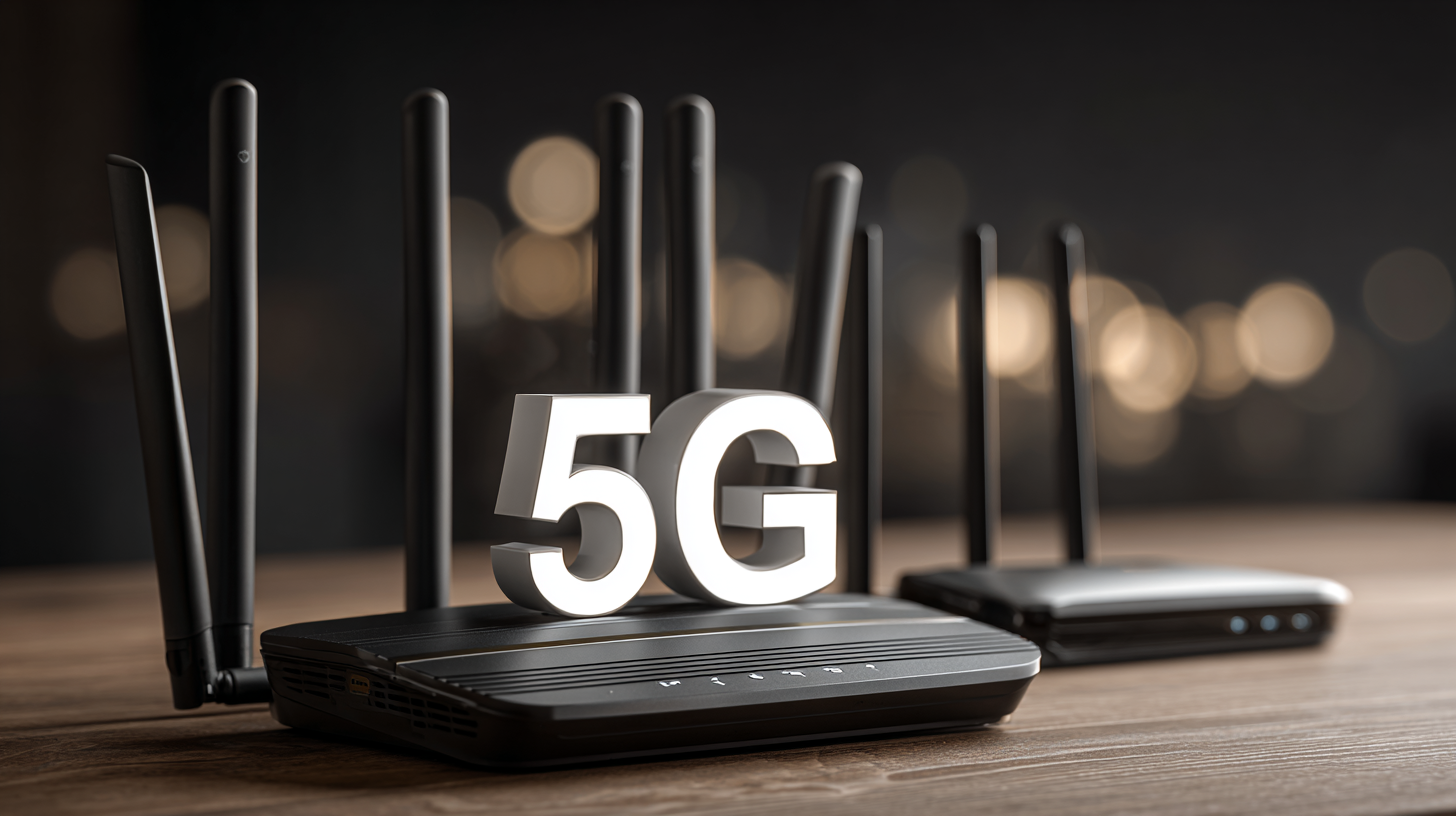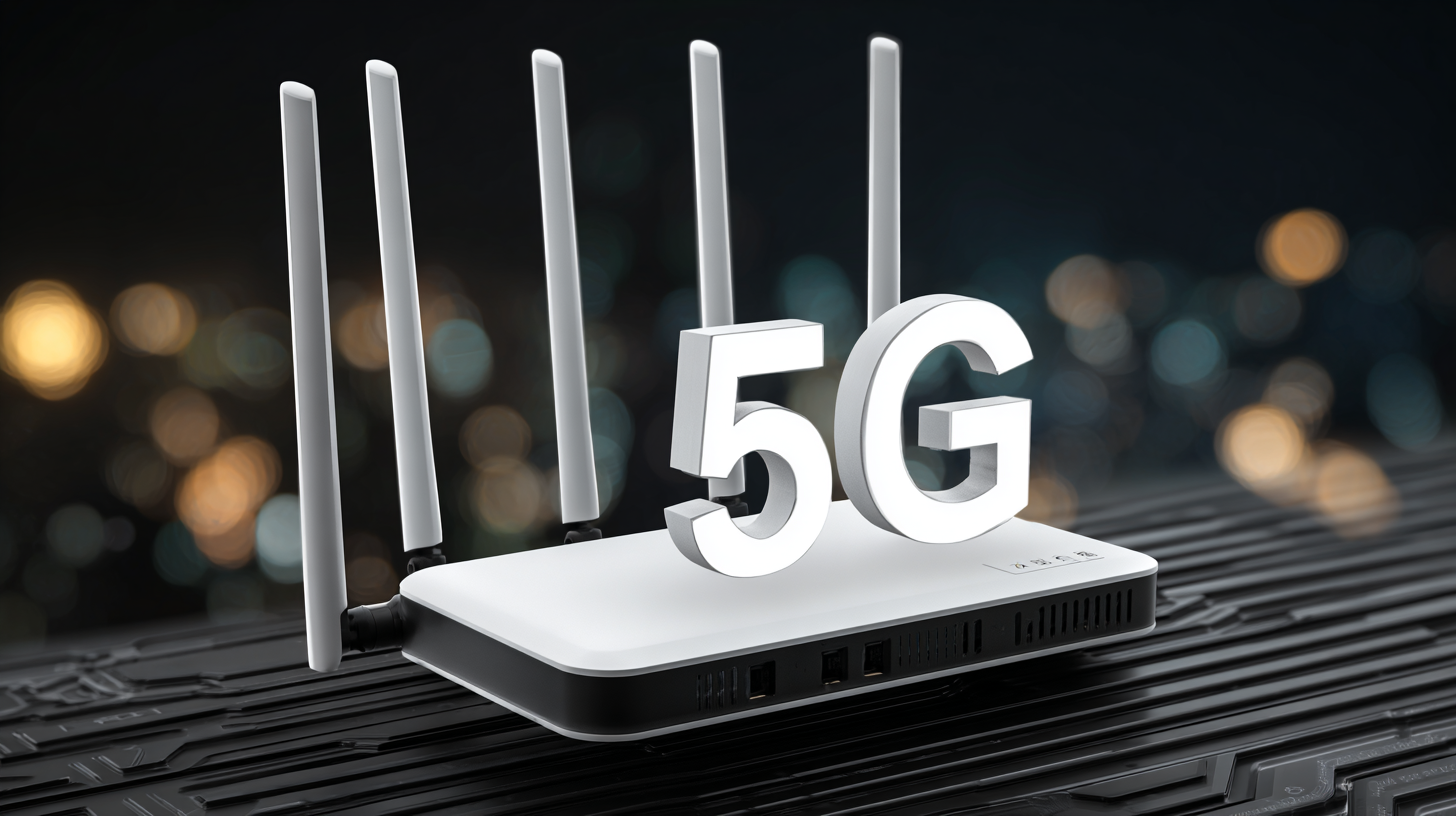In the rapidly evolving landscape of connectivity, the demand for robust and reliable internet solutions has surged, particularly with the advent of 5G technology. According to a recent report by Statista, the number of 5G connections worldwide is projected to reach over 1.7 billion by 2025, highlighting the critical role of devices and services that can harness this speed and efficiency. However, many users face challenges with standard 5G Router SIM cards, often experiencing limitations in coverage, data speeds, and reliability. As a result, exploring alternatives to the 5G Router SIM becomes essential for both businesses and consumers striving for superior connectivity.

This blog will delve into the best alternatives available, examining their features, benefits, and how they can facilitate an enhanced online experience in a world where high-speed internet is increasingly becoming a necessity.
As the demand for faster internet connectivity rises, many consumers have turned to 5G routers for their enhanced speed capabilities. However, while 5G technology promises high data rates and reduced latency, it also comes with significant limitations. According to recent industry reports, including a study by Gartner, 5G routers may face issues such as limited coverage, higher costs, and dependency on a stable 5G network infrastructure. These factors can hinder individuals and businesses looking for reliable and seamless online experiences.
Consequently, exploring alternatives to 5G routers could be beneficial. Options like Wi-Fi 6 routers, which have shown the potential to support multiple devices with lower latency, may provide a more stable service without the dependency on 5G availability. Additionally, satellite internet services are gaining traction, especially in underserved areas, as they offer wider coverage and can reach remote locations lacking robust cellular infrastructure.
**Tip:** Before committing to a 5G router, assess your area’s 5G coverage and consider conducting a speed test to ensure the service meets your connectivity needs.
**Tip:** Always compare the specifications of Wi-Fi 6 routers with your current internet usage requirements to find the best fit for your household or business.

When exploring the best alternatives to 5G router SIMs, it’s essential to delve into the performance metrics of various internet connectivity options. Traditional broadband, fiber optics, and satellite internet each offer distinct advantages depending on your location and internet usage needs. For instance, fiber optic connections deliver exceptional download and upload speeds, making them ideal for heavy users such as gamers and remote workers. In contrast, satellite internet provides access in rural areas where other options might not be available, though it may face latency issues.
**Tip:** When evaluating your connectivity options, consider running a speed test to measure your current internet performance. This quantitative assessment will help you understand your needs and whether a switch to fiber or satellite might be beneficial.
Additionally, it's crucial to assess the reliability of these alternatives. While some might boast higher speeds, factors like network congestion and outages can significantly impact performance. Look for providers that offer robust customer support and service guarantees to ensure a more satisfying internet experience.
**Tip:** Check online reviews and forums for user experiences with each type of connection. Real-world testimonials can provide insight into the reliability and performance you can expect from a provider.
This chart illustrates the average download speeds (Mbps) and latency (ms) of various internet connectivity options as potential alternatives to 5G routers. Analyzing these metrics can help users make informed decisions based on their connectivity needs.
As the demand for faster and more reliable connectivity grows, many users are seeking alternatives to 5G routers. Industry statistics reveal a noteworthy trend: a significant percentage of users are reporting high satisfaction levels with non-5G solutions, particularly in rural and suburban areas where 5G coverage remains limited. These alternatives often offer robust performance, with fixed wireless access (FWA) and advanced fiber-optic technologies standing out as reliable options. In surveys conducted among consumers, many have expressed that while 5G promises lightning speeds, their current non-5G setups provide sufficient bandwidth and stability for everyday tasks.

Moreover, cost-effectiveness plays a crucial role in user satisfaction with non-5G solutions. Many households have noted that opting for fixed broadband or cable services tends to be more budget-friendly, often coupled with consistent performance and customer support. The statistics also indicate that users appreciate the easy installation processes and minimal maintenance required with these alternatives, which contribute to their overall positive experiences. As such, the growing market for these non-5G options underscores the importance of understanding user preferences and adapting to their connectivity needs beyond the allure of 5G technology.
As businesses and individuals increasingly rely on high-speed internet, choosing the right connectivity technology has become crucial. When comparing cost efficiency, 5G routers offer remarkable speeds, but alternatives such as fiber optics and satellite internet can provide competitive benefits depending on usage scenarios. According to a recent report by the International Telecom Union (ITU), the average cost per gigabit for fiber connections is approximately $4.50, significantly lower than some 5G plans, which can exceed $10 for the same speed in many regions.
For those considering alternatives, satellite internet has evolved significantly, especially with the advent of low-Earth orbit (LEO) satellites. Companies like SpaceX's Starlink are now able to deliver high-speed internet to remote areas where traditional stay routers may struggle. They report speeds between 50 to 150 Mbps at competitive pricing averaging around $110 per month.
**Tip 1:** Always assess your internet needs—if high-bandwidth activities like streaming or gaming are your primary focus, fiber optics might be more cost-effective in the long run.
**Tip 2:** Remember to consider installation and equipment costs. Some providers offer free equipment with long-term contracts, which could sway your decision towards an alternative connection.
By understanding your connectivity requirements and examining the full spectrum of options, you can make an informed decision that balances cost and performance.
As we look towards the future of connectivity, significant trends are emerging that will undoubtedly shape how we interact with technology. The global data center market is anticipated to grow from $26.79 billion in 2025 to $58.486 billion by 2032, showcasing a robust compound annual growth rate (CAGR) of 11.7%. This growth signals a pressing need for enhanced connectivity solutions, including alternatives to conventional 5G routers. As businesses and consumers alike seek more reliable and high-speed internet, innovative technologies will play a crucial role in meeting these demands.
When considering alternatives to traditional 5G routers, it’s essential to keep a few tips in mind. First, explore options like fiber-optic internet, which offers superior speeds and reliability. Additionally, consider utilizing mesh networks, which can expand coverage areas and eliminate dead zones in your home or office. Lastly, keep an eye on the rollout of satellite internet providers, which are making strides in providing high-speed connectivity even in remote areas. By staying informed about these developments, users can select the most effective solutions for their connectivity needs as we transition toward a more interconnected future.
| Connection Type | Average Speed (Mbps) | Latency (ms) | Availability (%) | Cost (USD/month) |
|---|---|---|---|---|
| Fiber Optic | 1000 | 5 | 95 | 70 |
| Cable | 200 | 12 | 85 | 50 |
| DSL | 50 | 30 | 75 | 40 |
| Satellite | 25 | 600 | 65 | 100 |
| Fixed Wireless | 100 | 20 | 80 | 60 |
| 4G LTE | 50 | 30 | 90 | 40 |


